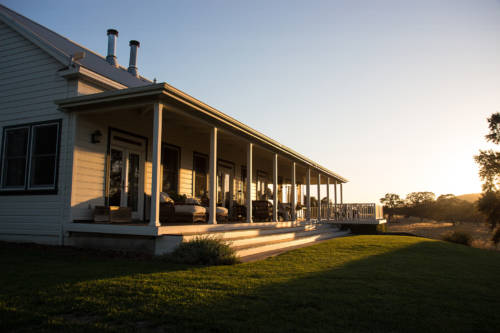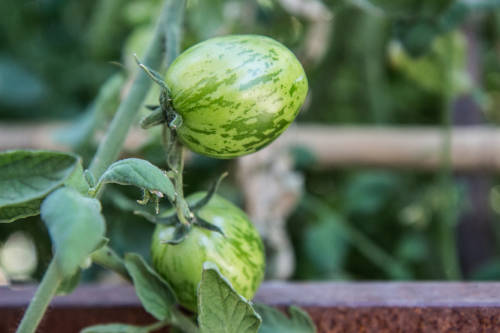
After Years in Interior Design, Emily Taylor Dreams of Making Ranch Life Accessible
Emily Taylor was 25 years into running a successful interior design business when she decided to pursue a passion that was equally romantic, but in a different way: she wanted to convert her family’s 65-year-old farmstead into a thriving, community-focused ranch.
The story of her family’s homestead reads like something out of the Great American Storybook: in 1951, Taylor’s father purchased two ranches in Ione, California, that he combined into one 550-acre property, having purchased the land before California real estate became as hotly-contested as it now is. Today, Taylor lives on the ranch with her husband and three kids, and dreams of converting the land, in the wake of her acquisition, so that it can support a full suite of agricultural crops, timber, and livestock.
Part of this vision is to make ranch life and an ability to connect with and live off of the land more prominent in her own life, while also making it accessible to others. Taylor maintains a 5-acre kitchen garden that supplants her family’s own meals, yielding fresh eggs and heirloom tomatoes, kale, zucchini, and cucumber, among other delights from the harvest. “You really notice the difference with heirlooms,” she insists, commenting on the tomatoes themselves. Surrounding herself with a beautiful grove of 75 olive trees (her family bottles their own olive oil), Taylor’s property is also covered in sensuous lavender plantings and other flora– she even keeps her own bees.
“I needed to turn this property into working land in order to save it– to save the ranch and the land. It’s a fun challenge, but very rewarding…”
Between the garden, her chicken’s own fresh eggs, and the local jersey milk that she gets from her friend Sean, Taylor is able to cook from the garden– an aspect of living off the land that most health and wellness acolytes would find enviable. Taylor, who is modest about her impressive goals, acknowledges that this is a treat, especially since maintaining the ranch has become what she describes as “a family affair”.
“I wanted a beautiful retirement,” she explains, mentioning, among other things, that she and her husband are currently in the process of renovating their 150-year-old brinery into a bar. “But I also feel that I needed to turn this property into working land in order to save it– to save the ranch and the land. I was fascinated with this topic and worried about the future of food, so my goal is eventually to move to a no-till farming model… It’s a fun challenge, but very rewarding.”
The ranch property also plays host to a field where Taylor and her family rear Texas Longhorn cows (though the operation is not yet commercial, last year the Taylor’s used Emily’s grandfather’s brand– which dates back to 1860– to mark the longhorns. The brand itself was so old that it had to be re-registered in the state of California). More accessible corners of the property, which is full of idyllic, rolling hillsides, serve as a backdrop to public lectures on the various trades and skill sets requires to maintain a ranch. Recently, she hosted the Jefferson Center’s Spencer Smith, who spoke about drought mitigation and fire prevention before an audience of local Californians who then when out on to the property to dig dirt. “It was amazing to be able to have that discussion and then go on to the land and put it into practice,” she adds.
Eventually, once the livestock component of her vision is underway, she’d like to hold butchering and cooking classes on site, as well– the idea being to bring accessibility and exposure to ranch life to interested community members. As such, the wide-open spaces of what was once her father’s property now serve as both an inspiration point and a teaching laboratory to countless others. Taylor is active in pursuing this dream– an approach that she says is not new to her, as she is used to building from the ground up (she was not trained in interior design, but she built a business out of it, after all).
As of this writing, Taylor has met with countless knowledgable experts (including most recently a sustainable wheat farmer) in order to build her knowledge base and continually improve her property’s capacity to produce food organically– an increasingly novel feat in drought-ridden California. This approach seems to be informed by an ethic of “paying it forward”, as much of the knowledge Taylor has gained herself came about from community engagement, either from talking to agriculture experts at farm conferences or from DIY videos online. “There’s so much information out there,” she remarks, energized by the challenge before her. “And if I can do it, anyone can.”




































